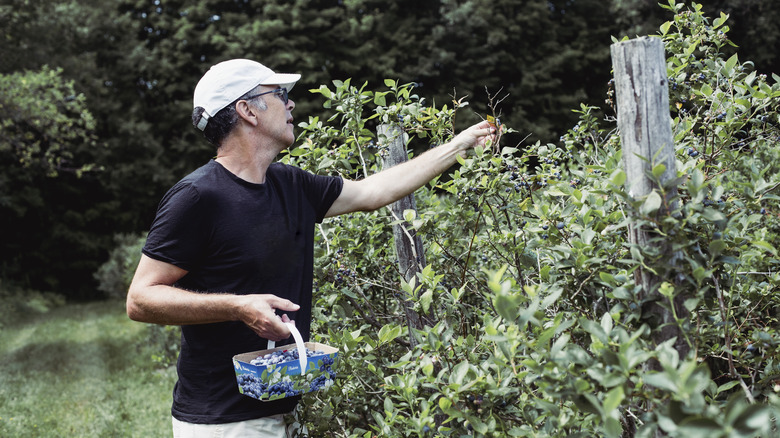The Crucial Factor That Could Spell Doom For Your Blueberry Bush
So, you're all set to grow blueberry bushes? Great choice! Before you start, there's one crucial factor you need to consider; proper spacing. It might seem like a small detail but it's a game-changer for your plants. According to the U.S. Highbush Blueberry Council, spacing for your bushes is key. For a dense, hedge-like growth, you should plant them about 2 to 2.5 feet apart. If you're aiming for individual, standalone bushes, give them a roomier 6 feet of space. A gap of 8 to 10 feet between the rows is also ideal.
But why the fuss over spacing? Well, blueberry bushes are a bit like people; they need their personal space. The University of Minnesota Extension says that crowding plants too close leads to competition for sunlight and nutrients. This competition can seriously stunt the growth and fruit production of your blueberry bushes. Plus, a crowded bush area is a paradise for disease thanks to poor air circulation. Although it might be tempting to squeeze in as many plants as possible, proper spacing may result in healthier plants and a better yield. But wait, there's more to growing blueberries than just spacing them right. You'll also need to consider the variety of blueberry bush that suits your garden, their pollination needs, and the specific care they require including soil conditions, sunlight, and watering. It's a bit of a balancing act but getting these factors right, along with proper spacing, sets you up for a bounty of delicious blueberries.
Exploring blueberry bush varieties
When diving into the world of blueberry bushes, it's fascinating to see the variety at your fingertips. Blueberries come in many shapes and sizes. Choosing the right one for your garden is a big part of the fun. Some varieties, like the 'Sunshine Blue', are perfect for smaller spaces. They don't spread out as much, making them ideal for tight spots. Understanding the nature of your chosen variety is key to successful blueberry growing. Blueberry bushes have a unique characteristic; they can self-pollinate to a certain extent. This trait allows even a single bush to produce berries. However, if your garden allows for it, consider planting several bushes. Doing so enhances cross-pollination, which is a process that often yields larger berries and a more plentiful harvest.
Now, let's talk about planting. You've got your spacing down; 2 to 2.5 feet for a dense row and up to 6 feet for individual growth. But what next? Think about your garden's layout. Where will your blueberry bushes get the best sun? How will they fit in with the rest of your garden? Remember, the way you plant your blueberries can vary. You could go for a traditional row, group them in clusters, or even dot them around as standalone features. The beauty of blueberry bushes is their versatility in both growth and landscape design. Whether you have a sprawling garden or a cozy balcony space, there's a blueberry bush that can fit right in.
Key factors for a thriving blueberry bush
Caring for a blueberry bush goes beyond just planting and watering. To help your bushes flourish, there are a few key factors you should keep in mind. First up is soil condition. Blueberries love soil with a pH ideally between 4.5 and 5.5. This acidity is crucial for them to absorb nutrients effectively. If your garden's soil isn't naturally acidic, don't worry. You can adjust it with soil amendments or choose a specialized potting mix containing ericaceous compost if you're growing in containers. Sunlight is another big player in the blueberry game. These plants need enough sun to produce the best fruit, which means a spot that gets lots of sunlight every day.
Now, let's talk about watering. Blueberry bushes have a preference for moist, well-drained soil. They need consistent watering, but it's a fine line. Too much water can be just as bad as too little. The goal is to keep the soil moist without letting it become waterlogged. A good tip is to check the soil regularly; it should feel damp but not soggy. Don't forget about mulching, either. A nice layer of mulch around your bushes can help maintain soil moisture and temperature in addition to keeping those pesky weeds at bay.


